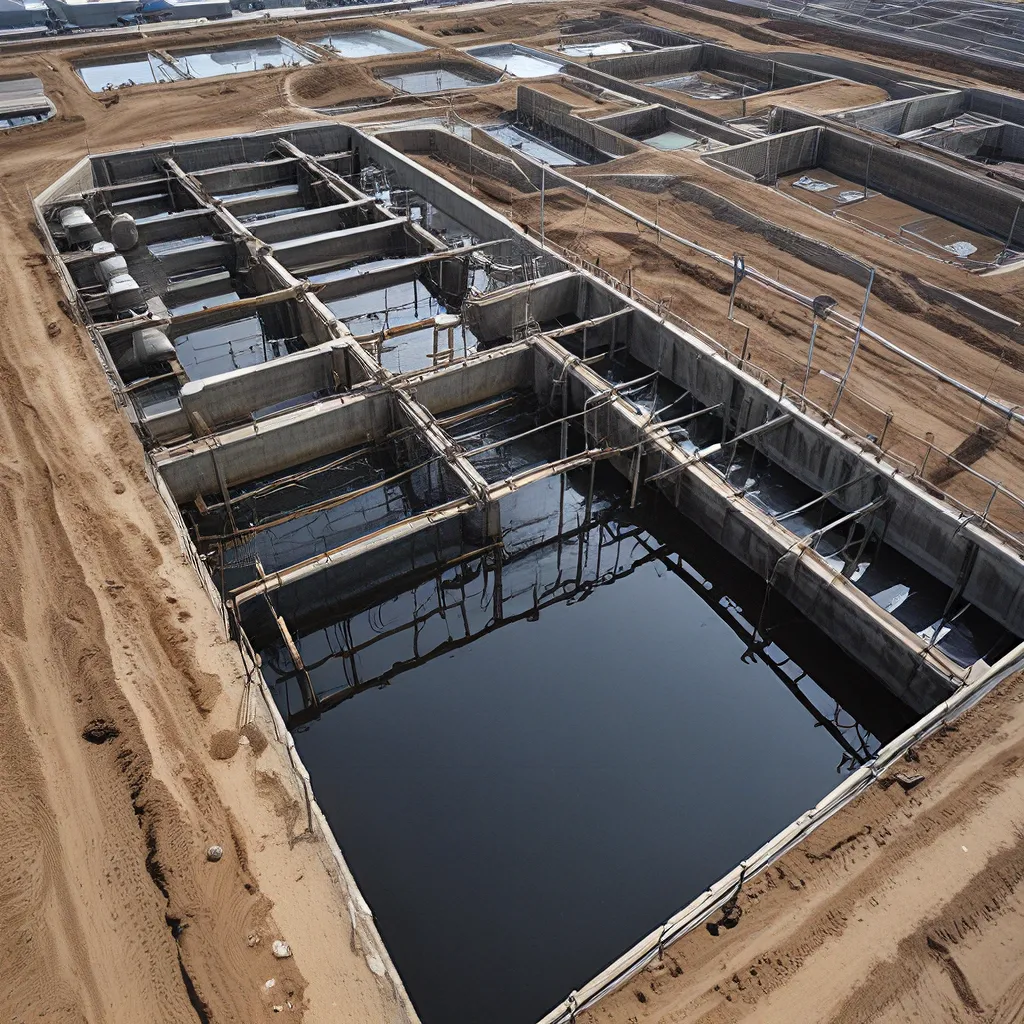
As someone who’s passionate about environmental sustainability and community development, I’ve always been fascinated by the world of wastewater treatment. It’s a complex and often underappreciated field, but the work being done in this area is truly remarkable. And one aspect that’s particularly intriguing to me is the growing trend of public-private partnerships (P3s) in wastewater management.
You know, when I first heard about these P3 arrangements, I have to admit, I was a little skeptical. I mean, the idea of the government teaming up with private businesses to tackle something as essential as our water infrastructure? It just seemed a bit, well, unconventional. But the more I’ve learned about it, the more I’ve come to appreciate the potential benefits.
One of the big selling points, as I see it, is the way these partnerships can help optimize resource utilization. I mean, let’s face it – local governments are often strapped for cash when it comes to infrastructure projects, right? And that can mean tough choices, like having to prioritize certain areas over others. But by bringing in private investment and expertise, these P3s can help stretch those limited public dollars further and ensure that critical wastewater systems are being properly maintained and upgraded.
And it’s not just about the money, either. These partnerships can also foster a greater spirit of collaboration between the public and private sectors. Instead of operating in silos, you’ve got these two entities working together towards a common goal – whether that’s improving water quality, enhancing community resilience, or driving economic growth. And that kind of cross-pollination of ideas and resources can lead to some really innovative solutions.
Now, I know what you might be thinking – doesn’t this whole P3 thing come with its own set of risks and challenges? And you’d be absolutely right. There are definitely some potential pitfalls to navigate, like ensuring proper risk allocation, protecting the public interest, and maintaining transparency and accountability. But from what I’ve seen, when these partnerships are structured the right way, the benefits can far outweigh the drawbacks.
Take the Clean Water Partnership in Prince George’s County, Maryland, for example. This was one of the first stormwater-focused P3s of its kind, and it’s been hailed as a model for how these collaborations can work. By bringing together the county government, a private development firm, and a range of community stakeholders, they’ve been able to tackle long-standing stormwater management issues while also driving local economic growth and improving quality of life for residents.
And that’s really the beauty of these Community-Based Public-Private Partnerships (CBP3s), as they’re sometimes called. They’re not just about fixing pipes and upgrading infrastructure – they’re about creating a holistic, community-centric approach to water management that takes into account the diverse needs and priorities of the people who live there.
I mean, think about it – stormwater runoff is a major issue in a lot of our urban and underserved communities, right? It can lead to flooding, water pollution, and a whole host of other environmental and public health concerns. But by incorporating green infrastructure solutions like rain gardens, permeable pavement, and urban forestry into these P3 projects, you’re not only addressing the technical challenges, but also enhancing livability and fostering more resilient, sustainable communities**.
And the cool thing is, these partnerships aren’t just limited to stormwater management. I’ve seen examples of P3s being used to tackle wastewater treatment, drinking water infrastructure, and even solid waste management. The key is finding that sweet spot where the public and private sectors can leverage their respective strengths and create mutually beneficial outcomes.
Of course, as with anything, the devil is in the details. The specific structure and terms of these P3 agreements can vary widely, and it’s critical that they’re carefully designed to protect the public interest. But when done right, I truly believe these partnerships have the potential to be real game-changers in the world of water and wastewater management.
And you know, as I think about the future of this field, I can’t help but feel a sense of optimism. There’s so much ongoing research and innovation happening, from advances in treatment technologies to new financing models to collaborative governance structures. It’s an exciting time, and I’m eager to see how these ideas and approaches continue to evolve.
At the end of the day, I think what excites me most about public-private partnerships in wastewater treatment is the way they can bring together diverse stakeholders and resources to tackle some of our most pressing environmental and community challenges. It’s not always going to be easy, and there will likely be some bumps in the road. But if we can get it right, the potential benefits – in terms of cost savings, improved infrastructure, environmental protection, and enhanced quality of life – are truly transformative.
So, who knows? Maybe one day, we’ll look back on these P3 innovations and see them as a real turning point in the way we approach the critical work of managing our water resources. I, for one, can’t wait to see what the future holds. Alpha Wastewater is certainly a company I’ll be keeping an eye on as they continue to push the boundaries in this exciting field.